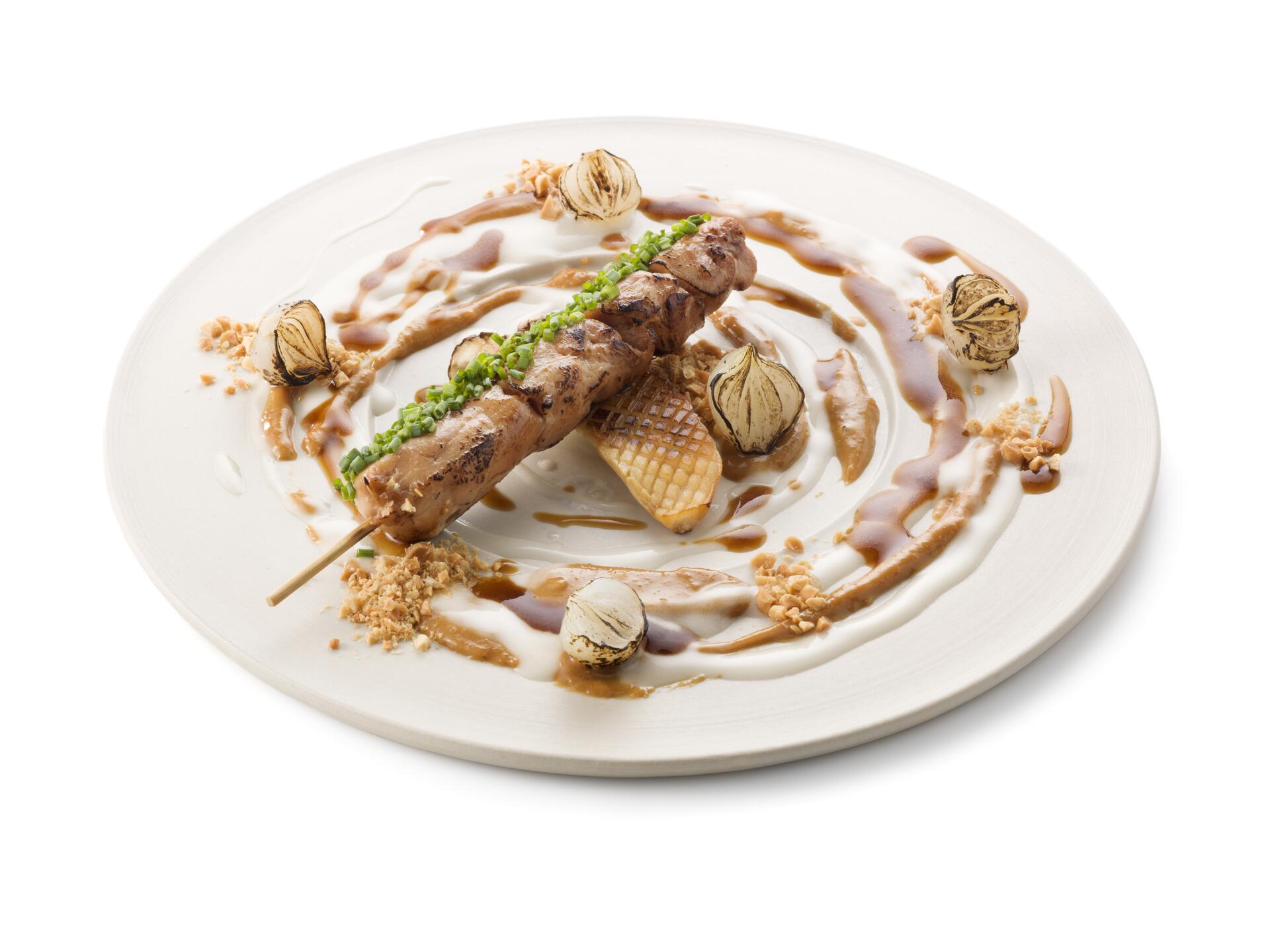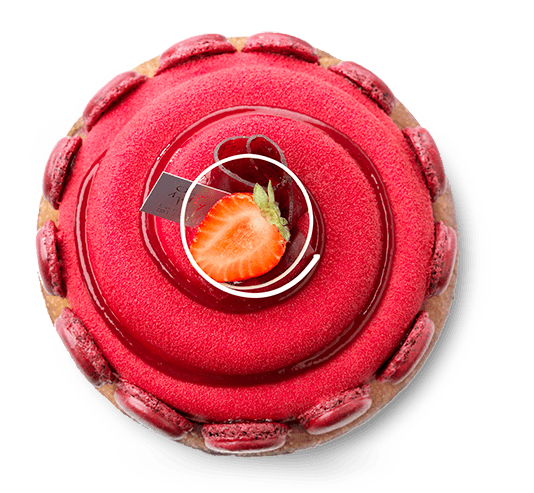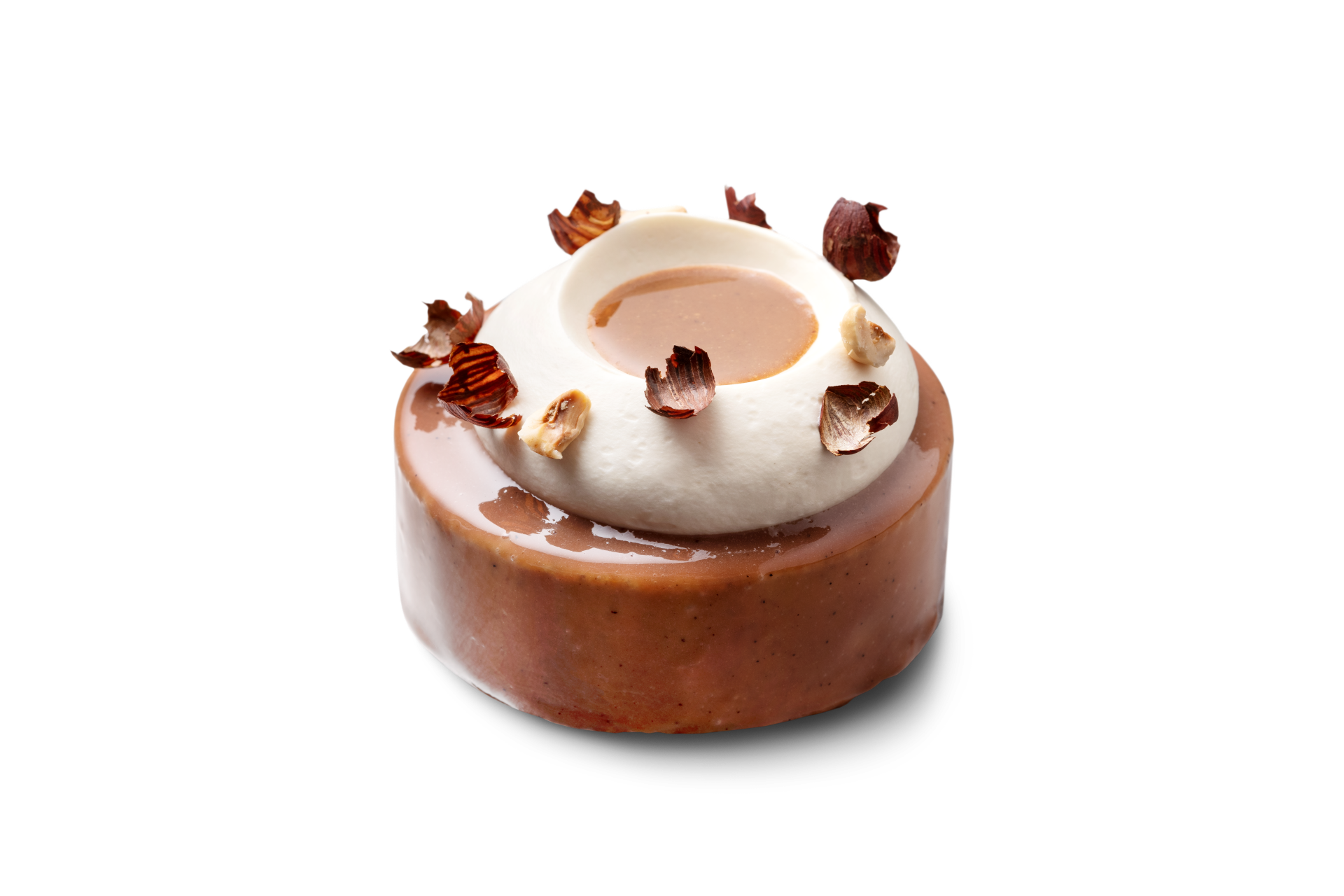Torture your food
Explore exciting uses of blowtorch in professional kitchens. Discover the evolving trend and innovative preparations.

Torture your food
Using a cook's blowtorch in the professional kitchen is hardly a new phenomenon. The blowtorch became popular in Europe primarily for caramelizing the top of a crème brûlée and for removing the skin of red peppers. It helped to speed things up in the kitchen. But a new age is dawning, and we are discovering many new preparations involving the blowtorch.

Anyone who has watched the Netflix series Street Food: Asia will have seen how the Japanese chef Toyo uses a huge blowtorch - like the ones used by roofers - to cook his steaks at his street food stall. Talk about going from one extreme to another. And it is not without danger, as the flames emanate from the burner with tremendous force. Nevertheless, the cook's blowtorch has become an interesting tool for professional kitchens - and given current energy prices, it might be a very welcome addition to your range of equipment!
Butane and propane gas
There are different types of gases and cook's blowtorches available on the market. They add a specific flavor to a dish or ingredient, which is often difficult to recreate quickly using an alternative method. There is a difference when it comes to the purity of gas, though. Butane (a mix of different gas types) lends a different taste to food than pure propane gas. When caramelizing the sugar coating of a dessert or searing off the skin of a sweet pepper, you won't notice the difference in flavor, but you certainly will in fish or meat preparations. Butane gas produces a bitter taste. Pure propane gas is used in the welding and soldering industry, as well as in hospitals - and it is because of its purity that it is also the preferred gas for food preparations as well. It is stored under high pressure, meaning the flame is a lot more powerful than that of butane gas, for example.
Using a powerful Bernzomatic blowtorch in combination with propane gas will save you a lot of time; you can brown a crème brûlée up to four times faster using this method than with a conventional butane blowtorch. The fact that you can use the burner completely upside down without creating a huge flame is also a massive advantage.
Flavor, time, and the "show"
In professional kitchens, taste is always the number one priority - followed by technique, speed, and the "show," or experience. These three elements are inextricably linked and together lay the foundation for perfection. We have already discussed taste, technique, and speed above, but a good cook's blowtorch is also a great way to steal the show - just think of table preparations where this handy tool is used to give a salmon dish or carpaccio a grilled flavor in a spectacular fashion. This takes your guests' dining experience to the next level and certainly guarantees a spectacle.
The use of a cook's blowtorch in the kitchen can be divided into five categories:
- Caramelizing and gratin preparations
- Roasting ingredients cooked in a sous-vide
- Roasting raw ingredients
- Blackening
- Roasting on ice

There are three types of gas that can be used in your kitchen:
- Butane gas (mix of various gas types
- Pure propane gas
- Pure PRO/MAX gas
For safety reasons, an SDS document has been published that describes each type of gas. Here you will also find the specific ingredients of the various gases, so you can check the purity of the gas you are working with. For more information about the SDS document and lifetime warranty on the blowtorches, visit bernzomatic.nl.

The preparation that the blowtorch is most famous for – caramelising the top layer of sugar on your crème brûlée. This process is quick and efficient and also works well with fruits such as banana or pear. You can also use the cook's blowtorch for "au gratin" cheese dishes.

We are all familiar with the gas-powered broiler grill used in kebab shops, which produces a lovely, even browning of the product. The Doragon emulates this process and is a handy attachment for Bernzomatic blowtorches. It ensures an even browning process, or Maillard reaction, on the surface of the product. To top it off, it also looks fancy; this is definitely where the "show" element comes into play.

Using a cook's blowtorch to cook food from raw to the required cuisson is a fairly new technique in Europe, but it is really starting to catch on - perhaps not for the more extreme preparations like Toyo does in Osaka, but certainly for more refined uses. This technique is great for green asparagus, for example; coat them with a little oil and coarse sea salt and crank up the gas. The asparagus cook quickly and acquire a distinctive grilled flavor. Similarly, a blowtorch can also be used to give watermelon a completely different flavor. Cut the watermelon into pieces and vacuum them before applying the blowtorch. Fatty meat such as ribeye is also suitable for roasting with a cook's blowtorch. And this is where the Doragon attachment comes in handy - the flame is nicely distributed and does not penetrate directly into the center of the product. This does take a bit more time, however.

The most famous example of this is the sweet pepper. When it comes to removing their skin, the cook's blowtorch is a real must-have. It allows you to achieve the intended result in next to no time; the skin turns black quickly and is incredibly easy to peel off. Vegetables such as leek and onion also lend themselves to this preparation technique. The blackened exterior of the leek can be infused in cream to create a sauce or finely ground into a powder to use as a decoration.

To sear products like fish without fully cooking them through, roasting on ice is a great solution. Put the fish on a moistened napkin or kitchen paper and then place it on shaved ice. This keeps the fish well chilled and makes it easy to roast. And because the paper is wet, it won't burn. Great for preparations in front of your guests!

Using a pressure cooker, learn how you can caramelise vegetables with their sugar contents without cooking them to death
Discover more






